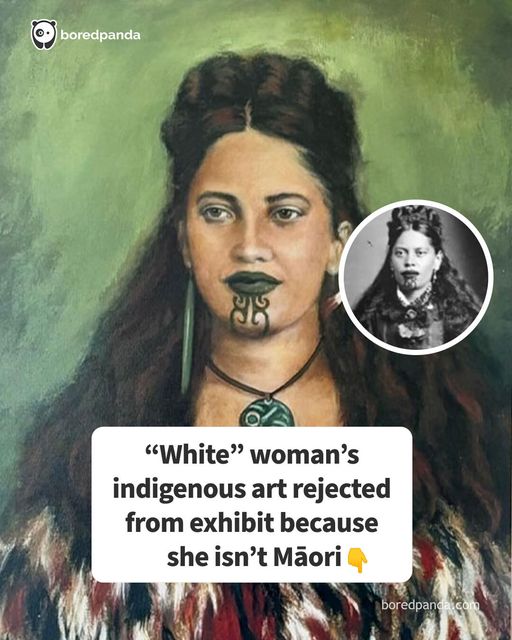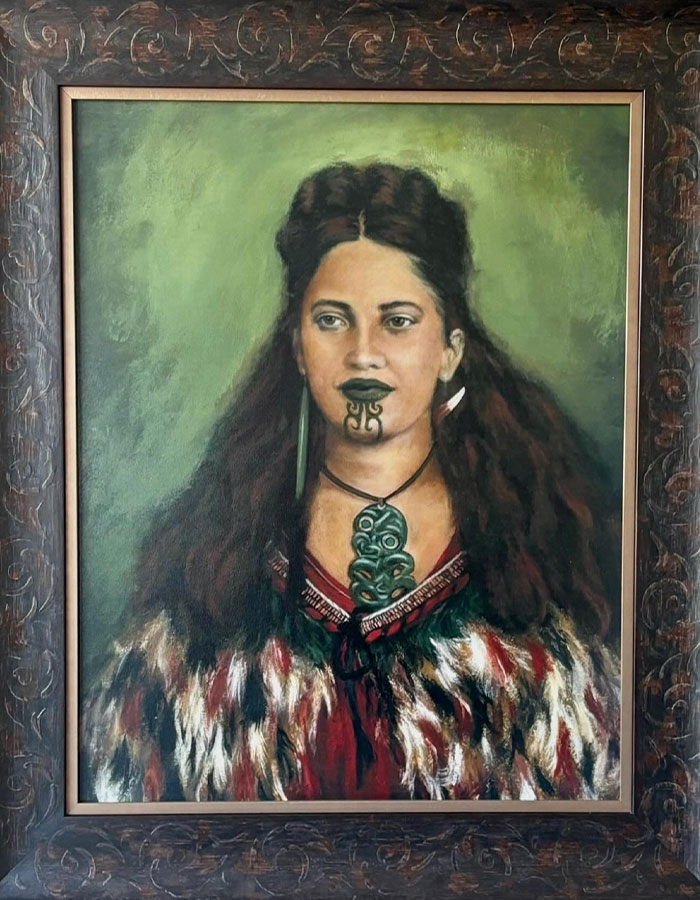A white-presenting woman from New Zealand claimed that she was barred from exhibiting her painting at an exhibition presenting Māori artists, because she isn’t part of the indigenous community. A video showing her painting – a portrait of a Māori woman – faced significant backlash, with many people denouncing her apparent entitlement.
- A white-presenting New Zealand woman claimed her artwork was rejected from an exhibit of Māori artists because she isn’t part of the indigenous community.
- The rejection sparked backlash on TikTok, with many accusing the artist and her daughter of entitlement and cultural appropriation.
- Critics argued that white people do not need to occupy every space and that Hazel Hunt’s painting was not genuine Māori art.
Earlier this month, a woman who goes by Ivana Gardner took to her TikTok page to defend her mom, painter Hazel Hunt, whom she claimed had been rejected by an art gallery, “because she’s not Māori.”
Although the original video has since been deleted, TikToker Lydia Tuaiti stitched Ivana’s clip, which showcased Hazel standing in front of her portrait of a Māori woman.
In the video, Ivana could be heard behind the camera saying: “She looks more beautiful in the painting than she does in real life,” to which Hazel could be heard replying: “She does.”
A white-presenting woman from New Zealand claimed that she was barred from exhibiting her painting
Image credits: artist_hazelhunt
The original video amassed millions of views and hundreds of comments attempting to explain that “white people do not need to occupy every single space,” before it was finally removed from TikTok.
In response, Lydia, who clarified that she is a non-Māori parent to Māori children, agreed with the criticism, highlighting Hazel’s sense of “entitlement”.
“She had a Māori woman, but she wasn’t a Māori artist, you didn’t meet the criteria,” Lydia said, before noting how “yucky” it was for the mother and daughter to say that the portrait looked better than the real woman who was the subject of Hazel’s painting.
Image credits: artist_hazelhunt
“And the painting is actually eurocentrified beauty standard,” Lydia added. She then admitted: “My personal opinion is I wouldn’t want the energy that came with that art piece in my house for my kids.”
While Ivana deleted prior videos related to her mom’s controversial painting, Hazel has shared her portrait of the Māori woman multiple times on her Instagram, drawing further backlash.
The Auckland-based painter seemingly first introduced the portrait in 2022, and was already facing some heat, as an Instagram user called her art an “embarrassment.”
It was an exhibition presenting Māori artists’ work
Image credits: artist_hazelhunt
After she shared the portrait again in 2023, another person wrote that it was “cringe”. In March 2024, Hazel stirred a slew of negative feedback again on Instagram, as a viewer penned: “First of all, pronounce Māori properly before you appropriate our culture for monetary benefit.
“Secondly, she does not look more beautiful in the painting, her features have been colonised by your eyes and paint brushes. Just stick to what you know sis!”
A separate individual chimed in: “Can’t even say Māori and want to profit off painting our culture, how cringe.”
Image credits: artist_hazelhunt
According to Krystal Warren, a senior lecturer at Massey University, incidents where white-identifying individuals appropriate spaces curated for marginalized communities, such Māori people in New Zealand, often occur.
“Yes, [it happens a lot],” she told Bored Panda in an email. [It’s a] symptom of settler colonialism.
Māori settled in New Zealand from East Polynesia from the eleventh century onwards, Minority Rights Group explains.
The artist was barred because she’s not part of the indigenous community
Image credits: artist_hazelhunt
As Europeans settled in New Zealand in the 19th century, Māori, as individuals and communities, were the subject of racism and discrimination, according to Te Ara Encyclopedia of New Zealand.
The intolerance of most white people was based less on an assumption of genetic superiority than of cultural superiority, the Encyclopedia states.
As per the Encyclopedia, the conversion of Māori to Christianity, the usurping of their resources (notably land for farming by settlers) and the growing dominance of the institutions of the New Zealand state were based on beliefs about the superiority of European civilization.
Image credits: artist_hazelhunt
This was also based on the perceived backwardness of Māori culture. Moreover, Māori schooling was based on the assumption that Māori were capable of becoming westernized as “honorary whites.”
Professor Warren pointed to a similar controversy that unfolded with an exhibition of Dutch-New Zealand artist Theo Schoon in 2019, which set off a debate about the place of racially problematic work in public spaces.
“Presenting Schoon’s work now involves facing up to a series of issues,” Skinner and Aaron Lister, who curated the exhibition, wrote in a catalog.
TikToker Lydia agreed with criticism highlighting the painter’s sense of “entitlement”
They continued: “The most urgent is his appropriation of Māori art. The colonialist — at times, patently racist — ideas underpinning his project are difficult to see past from a contemporary perspective.
“There are legitimate questions as to whether such work should be given time and space now and if an exhibition such as this necessarily endorses or excuses such attitudes.
“Māori art certainly did not need or ask for Schoon to be its savior — this was a delusional and potentially harmful position to adopt.”






